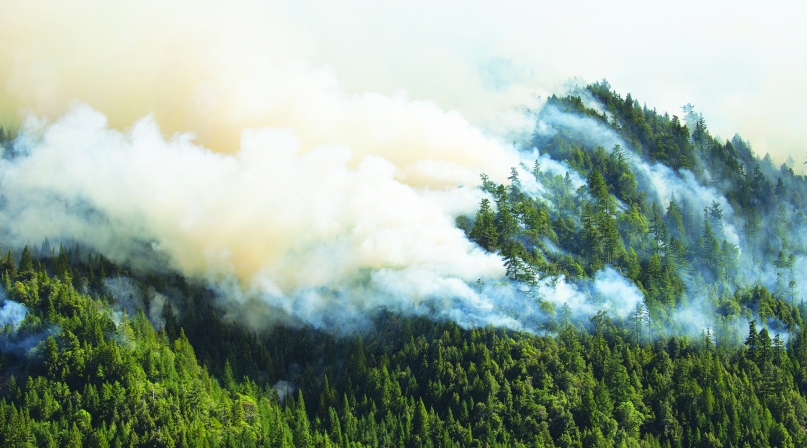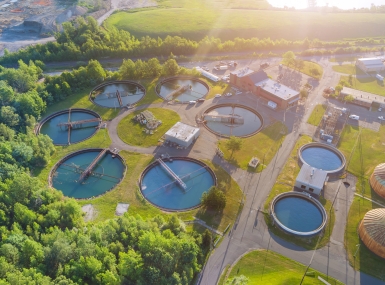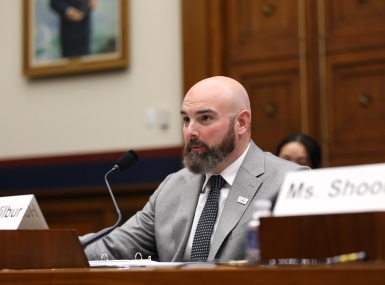Senate, House Interior spending bills block WOTUS rule, fully fund PILT
Upcoming Events
Related News

Both House and Senate Interior bills prohibit EPA's WOTUS rule
Both the House and the Senate appropriations committees have passed their versions of the FY17 Interior, Environment and Related Agencies appropriations bill, often referred to as the Interior bill.
The overall funding level for both bills is approximately $32 billion, a decrease from FY16 enacted levels. Of particular interest to counties, both the House and Senate Interior bills propose full funding of $480 million for the Payments in Lieu of Taxes (PILT) program and include legislative language to prohibit implementation of the “waters of the U.S.” rule.
Within the Department of the Interior (DOI), both bills provide a slight increase over FY16 for the National Park Service, with the Senate proposing $2.74 billion and the House proposing $2.9 billion in FY17.
Learn More
For the Bureau of Land Management (BLM), the Senate proposed a $6 million increase over last year to $1.24 billion, while the House proposed a $10 million funding decrease to $1.2 billion. Both chambers propose modest cuts to the FY17 budget of the U.S. Fish and Wildlife Service (FWS) to a final spending limit of approximately $1.5 billion.
The Forest Service, which is under the U.S. Department of Agriculture, would receive $5.2 billion in the FY17 Senate bill and $5.3 billion in the House bill. Both proposals would fully fund the 10-year average for wildfire suppression costs and include targeted funding for wildfire fuel reduction.
Under both the House and Senate bills, funding for EPA would be slashed. The House version would allot EPA $7.98 billion, which is $64 million less than FY16 levels and $291 million less than the Administration’s request. The Senate bill would fund the agency at $8.1 billion, which is $31.2 million below FY16 enacted levels.
The fate of both Senate and House Interior bills remains uncertain. The annual legislation has become a lightning rod for controversial issues, including floor fights over funding levels and hotly contested environmental policy riders from both sides of the aisle.
Key provisions of interest to counties within the bills include:
PILT: Both Senate and House Interior bills propose to fully fund the PILT program in FY17 at a level of $480 million. The PILT program was created in 1976 to offset costs incurred by counties for services provided to federal employees and families, the public and to the users of public lands.
Wildland Fire: Both bills include full funding for wildland fire suppression costs at 100 percent of the 10-year average. The Senate bill also includes legislative language supported by NACo that would provide a budget cap adjustment when wildland fire suppression costs exceed available funds, preventing the practice known as “fire borrowing” in which other government accounts are raided in order to pay wildfire suppression costs. Both House and Senate bills include additional targeted funds to support proactive hazardous fuels reduction across the federal forest system.
Sage Grouse: Both House and Senate Interior bills include provisions to extend a one-year delay of Endangered Species Act (ESA) listing decisions for the Greater Sage Grouse. The House Interior bill includes a $12 million increase for the Bureau of Land Management to support Sage Grouse conservation activities within the BLM while avoiding broad, sweeping land use restrictions; a similar provision in the Senate bill would provide a $10 million increase.
Planning 2.0: During the House Appropriations Committee’s markup of the Interior bill, an amendment was offered by Rep. Mike Simpson (R-Idaho) that would withhold funding to implement the BLM’s Planning 2.0 rule until BLM has reopened the public comment period for an additional 90 days and has held in-person public meetings on the rule in each of 12 affected Western states, Texas and Oklahoma. NACo and many county governments continue to express concerns over the limited amount of time county governments were given to provide meaningful input on the BLM’s proposed rule.
Land-Water Conservation: The House bill provides $322 million for LWCF programs, a reduction of $128 million below the FY16 level and $153 million below the president’s request. Within LWCF funds proposed by the House, state and local recreation and battlefield preservation programs are prioritized, with State Conservation Grants receiving $71.8 million in FY17 and $10 million for battlefield protection. The Senate bill includes $110 for State Conservation Grants and $10 million for battlefield protection.
Water Infrastructure Funding: The Senate bill contains more than $2.37 billion for the Clean Water (CW) and the Drinking Water (DW) State Revolving Funds (SRF) program. This is an increase of $113 million over FY16 levels. Specifically, the CWSRF would receive $1.35 billion and the DWSRF gets $1.02 billion.
Under the House bill, CWSRF and DWSRF programs would receive a combined sum of $2.07 billion, of which $1 billion would be allotted to the CWSRF, and DWSRF would receive $1.07 billion.
NACo supports funding for both CWSRF and DWSRF programs. The CWSRF program funds municipal wastewater infrastructure construction or project upgrades, and the DWSRF program supports Safe Drinking Water Act infrastructure projects.
Both bills also include funding for the Water Infrastructure Finance and Innovation Act (WIFIA), which was enacted in 2014 but not funded. WIFIA is a five-year financing program that allows EPA to provide direct loans and loan guarantees for the construction of large water infrastructure projects.
For the first time, both the Senate and House appropriations bills fund WIFIA. The Senate allots $30 million and the House proposes $50 million. NACo supports funding WIFIA because it has the potential to significantly lower water infrastructure costs for large projects.
Leaking Underground Storage Tank Program: The Leaking Underground Storage Tank (LUST) Program provides grants to the EPA and states to undertake cleanup responsibilities around abandoned gasoline and petroleum storage sites. The House version of the Interior bill provides $68 million for the LUST program.
The Senate bill provides close to $66 million for LUST cleanup.
NACo supports full funding for the LUST program if those funds are used for their intended purpose of remediating and preventing further contamination caused from underground storage tanks.
“Waters of the U.S.” (WOTUS): Last year, the U.S. Army Corps of Engineers and the EPA finalized controversial new definitions for “waters of the U.S.” within the Clean Water Act. NACo has expressed multiple concerns over the rule’s impact on county-owned and maintained roadside ditches, bridges, flood control channels, drainage conveyances, and wastewater and stormwater systems and has called for the final rule to be withdrawn until further analysis and more in-depth consultation with state and local officials can be completed.
Both the House and Senate bills contain provisions to prohibit EPA from acting on its WOTUS rule. The provisions would prevent the EPA from moving forward to “implement, administer or enforce” the rule even if the federal court system were to lift its stay on the rule.
The House Energy and Water Appropriations bill, which funds U.S. Army Corps of Engineers (Corps) and Department of Energy programs, has a similar provision preventing the Corps from enforcing the WOTUS rule.
The FY17 Interior bill is one of the 12 annual spending bills that must be passed each year by Congress to fund federal government operations. The bill gives money to federal land managers under the U.S. Department of the Interior and the U.S. Forest Service as well as U.S. Environmental Protection Agency and many other agencies.
Attachments
Related News

U.S. Environmental Protection Agency announces actions to combat PFAS contamination
On April 28, the U.S. Environmental Protection Agency (EPA) announced a new suite of upcoming actions to address contamination from per- and polyfluoroalkyl substances (PFAS). These measures, outlined by EPA Administrator Lee Zeldin, aim to strengthen scientific understanding, enhance enforcement and build partnerships with impacted communities, including counties and other local governments.

NACo testifies before Congress on brownfields revitalization
On May 7, Oswego County, N.Y. Clerk Terry Wilbur testified on behalf of NACo before the U.S. House Subcommittee on Water Resources and Environment at a hearing titled “Cleaning Up the Past, Building the Future: The Brownfields Program”.

Podcast: Life after coal for one county
Commissioner Melody Villard and Economic Recovery Corps Fellow Sasha Nelson discuss the transition Moffat County, Colo. planned to diversify its economy after the closure of coal mines and a power plant decimated its property tax revenue.